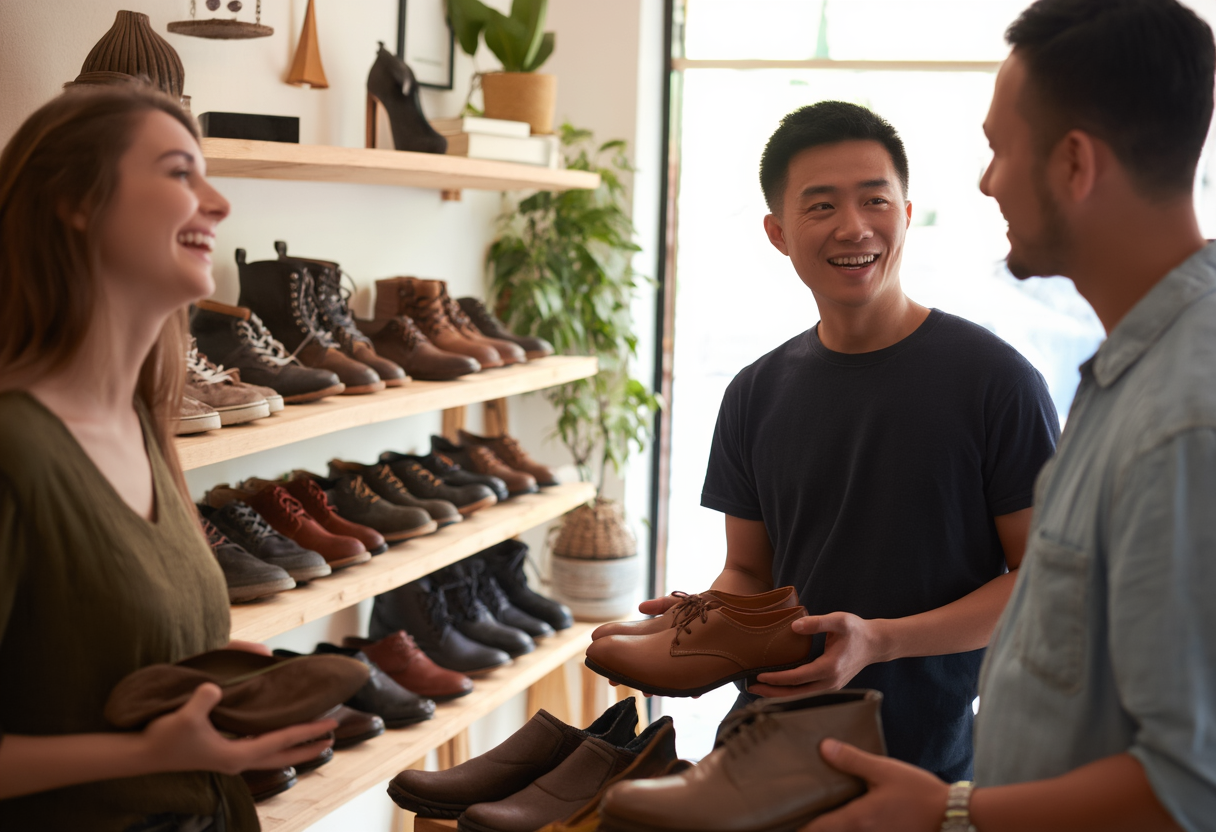The Rising Trend of Second-hand Shoes: Why More People Are Choosing Pre-owned Footwear
The popularity of second-hand shoes is surging as consumers gravitate towards sustainable options. This article explores the eco-friendly benefits, affordability, and unique styles that make pre-owned footwear appealing. We delve into the cultural shift towards thriftiness and the broader implications for the fashion industry. Discover why second-hand shoes are not just a trend, but a movement towards mindful consumerism.
The Shift Towards Sustainability
In recent years, the fashion industry has witnessed a substantial shift towards sustainability, with second-hand shoes taking center stage. As consumers become increasingly aware of environmental issues, they are seeking eco-friendly alternatives to fast fashion. Second-hand shoes offer a perfect solution, as they not only reduce waste but also lessen the carbon footprint associated with the production of new footwear. Additionally, the stigma around purchasing used items is fading, with more individuals embracing pre-owned footwear as a trendy, chic choice. This change in attitude is reflected across various demographics, as various age groups now participate in the second-hand market, fueled by a desire for unique, affordable styles. Brands that promote sustainability are gaining popularity, encouraging resale cultures and fashion awareness among consumers. Ultimately, the rise of second-hand shoes is a testament to changing consumer values.
The Affordability Factor
One of the most significant advantages of second-hand shoes is their affordability. Shoppers can find high-quality footwear at a fraction of the original price, making it accessible for a larger audience. From designer brands to casual everyday wear, the vast selection available in thrift stores and online platforms attracts budget-conscious individuals. Furthermore, the increasing number of resale apps and websites has made it easier than ever to discover pre-owned footwear bargains. As a result, the growing popularity of second-hand shoes reflects an intelligent consumer mindset—maximizing value without sacrificing style. This emphasis on financial practicality not only appeals to younger generations dealing with student loans and economic hardships but also resonates with older generations seeking to reduce unnecessary expenditures.
Unique Styles and Personal Expression
In the realm of fashion, personal style takes precedence. Second-hand shoes present a unique opportunity for individuals to showcase their taste without conforming to mainstream trends. Vintage and limited-edition kicks offer a nostalgic appeal that many find irresistible. Each pair tells a story, adds character to an outfit, and represents a small piece of history. This individuality contributes to the allure of second-hand footwear, as shoppers are less likely to encounter others sporting the same shoes. Thrift shopping for footwear becomes an adventure in seeking out unique finds while expressing oneself creatively. Social media platforms, especially Instagram and TikTok, have played a pivotal role in highlighting these one-of-a-kind pieces, further inviting consumers to embrace their distinct styles.
Cultural Attitudes Towards Thrift Shopping
Cultural shifts in attitudes towards thrift shopping have significantly influenced the second-hand shoe market. Once seen as a last resort, purchasing pre-owned shoes is now viewed as a trendy, responsible choice. This represents a broader societal change towards sustainability and mindfulness. The rise of platforms like Poshmark and Depop allows users to buy and sell their footwear within a vast community that embraces second-hand culture. Social influencers and celebrities have also helped normalize thrift shopping, encouraging fans to adopt similar practices. This cultural acceptance has propelled the success of second-hand shoes into the mainstream, transforming them into symbols of values such as environmental concern and financial wisdom, rather than mere cost-cutting measures.
The Impact on the Fashion Industry
As more consumers choose second-hand shoes, the fashion industry's focused direction is shifting. Brands are increasingly recognizing the impacts of sustainable practices, with many adopting circular economy principles. This change has ushered in collaborations between renowned designers and second-hand platforms, further blending luxury with sustainability. In response to this trend, some companies are modifying their manufacturing processes to incorporate recycled materials or promote resale of their products. As a result, the lines between new and second-hand shoes are blurring, creating a hybrid landscape where both thrive on their merits. This convergence might redefine fashion norms altogether, allowing consumers to be part of a growing community that values sustainability.
Conclusion: Embracing a New Era of Consumerism
In conclusion, the rise of second-hand shoes is indicative of profound changes within consumer behavior and industry practices. By prioritizing sustainability, affordability, and uniqueness, consumers are leading a movement that challenges traditional retail paradigms. Second-hand shoes are not merely a fashion choice; they represent a shift towards mindful consumerism that values quality over quantity. As this trend continues to grow, it holds potential for reshaping future shopping habits, leading to a more conscious and responsible style landscape. Every step taken in second-hand shoes can signify an individual commitment to sustainability, making each pair a statement of purpose.
